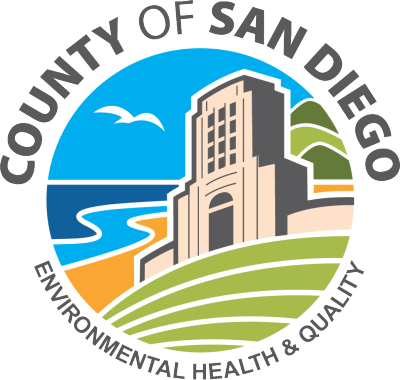Small Drinking Water Systems

The Department of Environmental Health and Quality (DEHQ) Small Drinking Water Systems program's purpose is to protect public health by helping water system owners and operators to provide pure and safe drinking water by preventing waterborne diseases, identifying risks of bacteriological or chemical contamination, conducting inspections, providing technical assistance, and working in partnership with the small drinking water systems in San Diego County. In July of 2022, San Diego County’s Community Water Systems, Non-Transient Non-Community Water Systems, and Transient Non-Community Water Systems returned to the State Water Resources Control Board - Division of Drinking Water for oversight and regulation. DEHQ currently regulates only State Small Water Systems.
Upcoming Training Opportunities
Contact Us
Small Water System Program (858) 694-3113 |
Program Services
- Provide technical assistance
- Coordinate with the CRWA and the RCAC to provide drinking water workshops in San Diego County
- Provide assistance in obtaining grants and loans
- Assist small drinking water systems to be in compliance with the CA Safe Drinking Water Act through regular inspections, providing water quality monitoring schedules, and enforcement of statutes and regulations
Water System Classifications
- A Community water system is a public water system with a minimum of 15 residential service connections used by year-long residents, or regularly serves at least 25 year-long residents. An example would be a community with residential homes served by a single water system.
- A Non-Transient Non-Community water system is a public water system that is not a Community water system and regularly serves at least the same 25 persons during 6 months per year. An example would be a school or workplace.
- A Transient Non-Community water system is a Non-Community public water system that does not provide water to the same 25 persons during 6 months per year. An example would be a campground or park.
- A State Small Water System is a public water system that has 5 to 14 service connections, and does not regularly serve potable water to more than 25 individuals for more than 60 days out of the year. An example would be a small residential community with 10 homes served by a single water supply.
Water Quality Monitoring
-
Bacteriological Monitoring Requirements:
All small drinking water systems are required to test for the presence of total coliform bacteria on a regular basis per Federal and State Drinking Water Standards. State Small water systems are required to test quarterly for the presence of total coliform bacteria. All water quality testing is required to be analyzed by a State-certified laboratory. -
Chemical Monitoring Requirements:
In addition to bacteriological monitoring requirements, small drinking water systems are required to test for chemical constituents that are described in Title 22 California Code of Regulations. Primary Maximum Contaminant Levels (MCL's) address health concerns. Secondary MCL's are aesthetic standards that deal with taste and odor of the water, and are not health hazards. Contact the Small Drinking Water Systems Program at (858) 694-3113 for specific water quality testing for your small drinking water system.
For additional information please contact us or see the following links:
- Chemicals and Contaminants in Drinking Water
- Recently Adopted State Drinking Water Regulations
- Distribution and Treatment System Operator Certification
- TMF (Technical, Management, and Financial Assessment) Requirements
- Bacteriological Sample Siting Plan For Quarterly Testing
- Emergency Notification Plan
- Water Provision Declaration
- Small Water System Plan Review Application
- Environmental Intake Form





